Ground Contenders: Great Grass Alternatives
09 Apr 2021
These ground covers give water-hogging grass some serious competition for the title of king
By Sara Bruskin
In 17th century England, affluent landowners grew expansive lawns as status symbols. Not used for food or livestock, these valuable acres still required laborious upkeep. These days, we may not need an army of gardeners to keep our lawns manicured, but Colorado’s semiarid climate still makes growing nonnative grasses a bit indulgent, since they require far more irrigation and upkeep. Drought-resistant grass alternatives that are colorful, better for the soil and don’t require mowing are plentiful. Some even repel mosquitoes!
Not to say that grass is without merit; parents especially appreciate its soft, resilient carpeting that looks good even after tiny feet tear across it multiple times a day. The majority of grass alternatives wouldn’t work in heavily treaded areas, although they’d be excellent in borders and other spots. Grass is still your best bet for sites with substantial foot traffic, but you can curtail its water-chugging tendencies by planting less-thirsty varieties. Fescue, buffalo and blue grama tolerate dry conditions better than most, and Dog Tuff grass is not only drought- and heat-tolerant, it’s resistant to urine stains from pets.
If you’re not set on grass, read on for some great water-wise alternatives. These ground covers will need a decent amount of water to establish, but once their roots are set, they’re extremely low-maintenance.

Clover

A known nitrogen-fixer, clover is valued by many gardeners for its beneficial soil impacts. Apply those benefits by scattering clover seed this spring. Dutch white clover is fairly low-growing at 4 to 8 inches, and can keep your lawn looking lush and green even during summer droughts. For more colorful foliage, Mikl Brawner of Harlequin’s Gardens in Boulder points to Trifolium repens ‘Dragon’s Blood,’ which is minty-green with blood-red streaks. Or try Trifolium repens ‘Penta-phyllum,’ a black-leaved clover.
Pros: Improves soil health; pollinators love the flowers; inexpensive seed; requires little to no supplemental water; can tolerate light foot traffic.
Cons: Can’t withstand heavy foot traffic or roughhousing from dogs or kids.
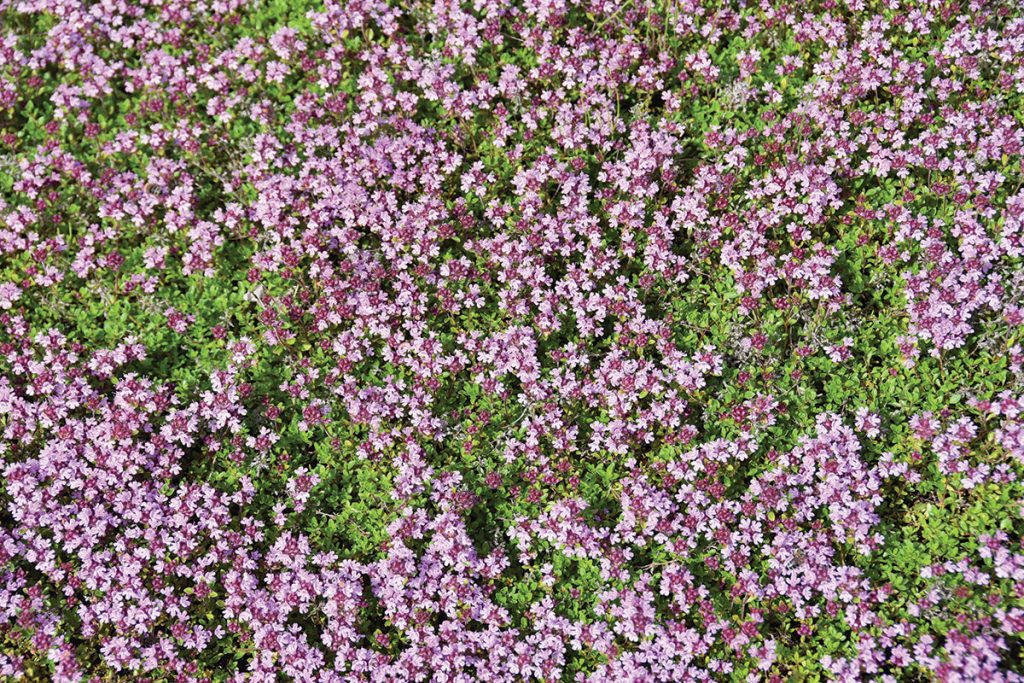
Creeping Thyme
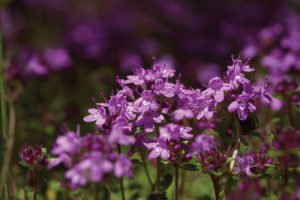
For 20 years, Brawner has experimented with 60 different plants in his Xeriscape Ground Covers Display and Test Beds to see which excel in our dry climate. He now enthusiastically recommends creeping thyme, among other grass alternatives. Several varieties have flourished on a quarter of the water it takes to sustain Kentucky bluegrass. Especially hardy performers are red creeping thyme, ‘Reiter’ thyme and ‘Ohme Garden’ thyme.
Pros: Colorful flowers; requires very little water; foliage provides winter interest; tolerates moderate foot traffic; repels mosquitoes.
Cons: Can be expensive to cover a large area; while fairly resilient, heavy foot traffic or roughhousing still take their toll.
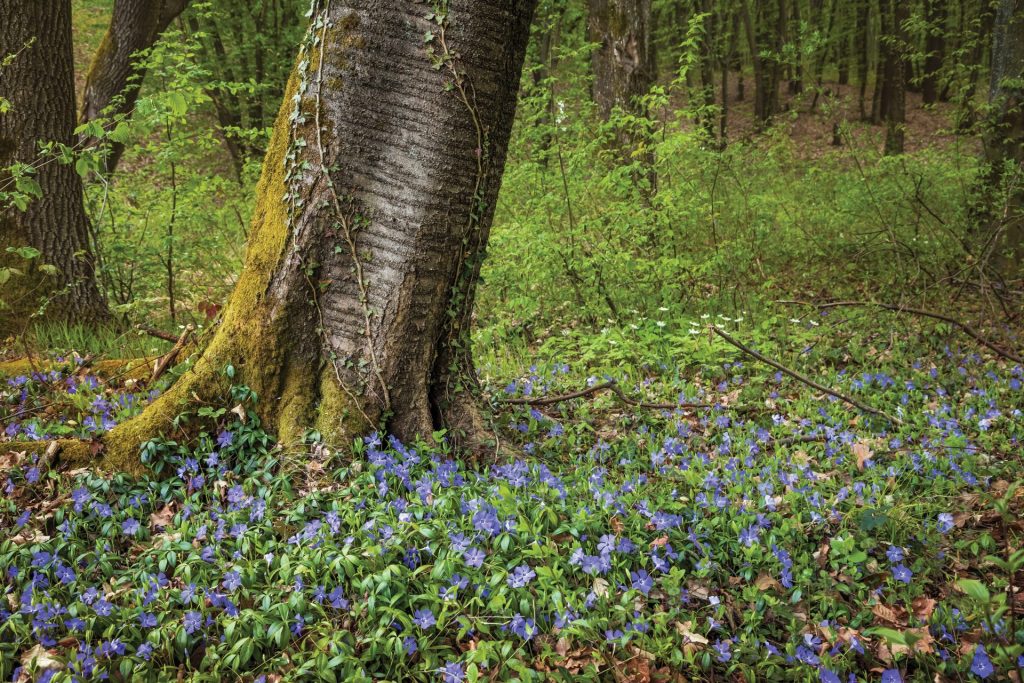
Periwinkle
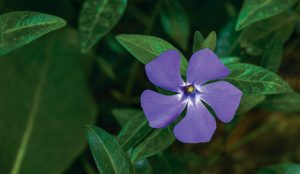
A great choice for difficult shady areas, periwinkle has beautiful flowers and semievergreen leaves. Josh Wagner of Green Landscape Solutions in Lafayette says it’s especially useful for erosion control on banks. Once established, periwinkle needs virtually no maintenance. It can also survive in sunny areas, but won’t spread as quickly.
Pros: Year-round interest, since its leaves often don’t die in winter; low water needs; easily crowds out weeds; low growth habit; can tolerate light foot traffic.
Cons: May be difficult to remove; can’t withstand heavy foot traffic or roughhousing from dogs or kids.

Sedum Spurium
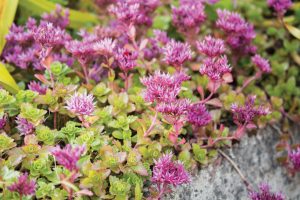
Also called two-row stonecrop, sedum spurium comes highly recommended by experts at both Harlequin’s Gardens and TLC Gardens in Boulder. Brawner has seen fantastic results with the ‘Bronze Carpet’ and ‘Dragon’s Blood’ varieties in his test garden.
Pros: Requires very little supplemental water; tolerates heat well; colorful foliage and flowers; flowers attract pollinators; -rabbit-resistant; can tolerate light foot traffic.
Cons: Can’t withstand heavy foot traffic or roughhousing from dogs or kids.
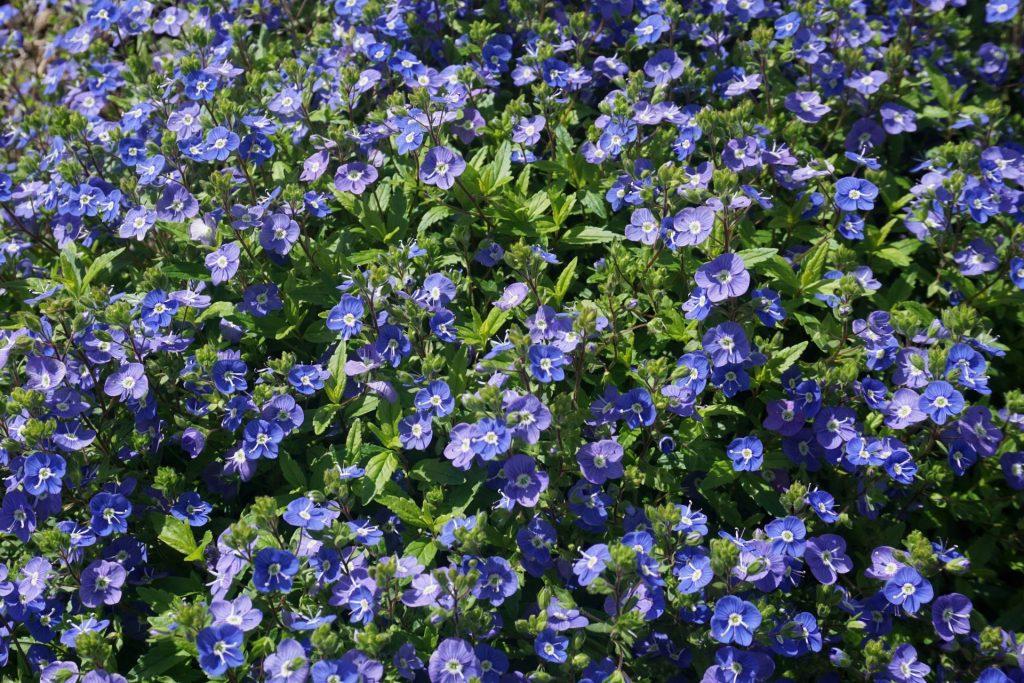
Creeping Veronica
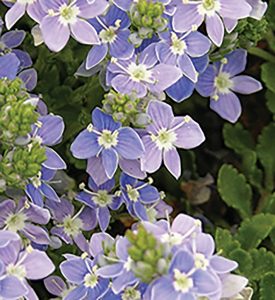
Another star of Brawner’s test beds is creeping Veronica. Also known as creeping speedwell, this plant grows into a dense mat of low ground cover with small blue flowers. Drought-tolerant and beautiful, it can flourish in partial shade, but you’ll get more flowers in an area with some sun exposure. Brawner recommends Veronica ‘liwanensis’ and Veronica ‘pectinata.’
Pros: Colorful flowers; requires very little water; foliage provides winter interest; tolerates light foot traffic; shade-tolerant.
Cons: Can’t withstand heavy foot traffic or roughhousing from dogs or kids; may spread aggressively into other planting areas, though it’s not considered invasive in our area.
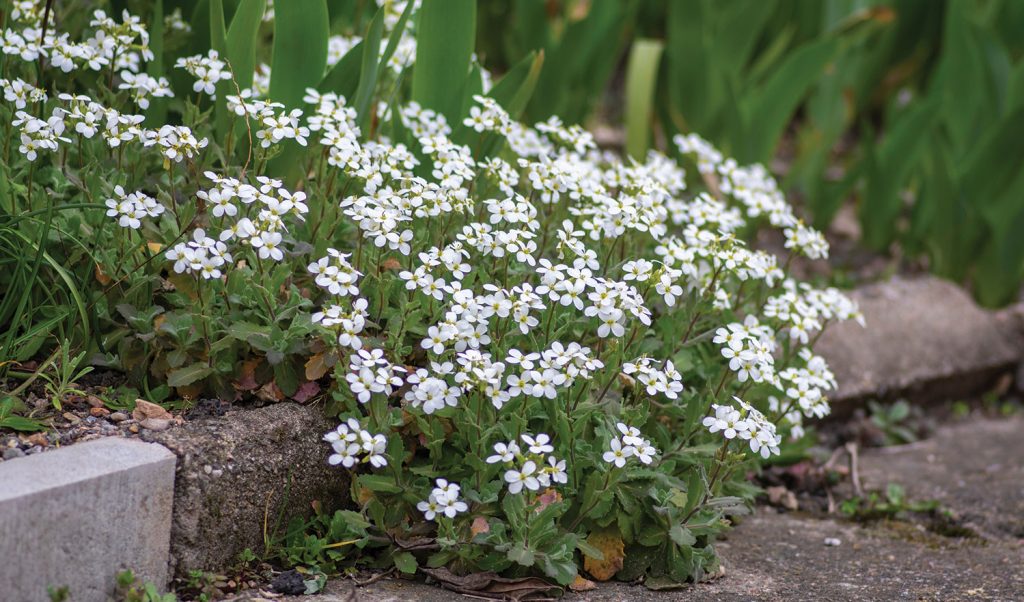
Rockcress
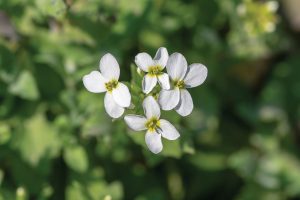
This perennial alpine plant grows in dense mats that are especially beautiful during its midsummer bloom. Wagner says, “Choices of purple, pink or white flowers provide options for this easy growing, deer-resistant ground cover.” For best performance, he recommends growing it in full sun.
Pros: Grows well in Colorado’s alkaline clay soils; can grow on hills or slopes; flowers attract pollinators; can tolerate dry soil; survives light frosts.
Cons: Can’t withstand much foot traffic.












